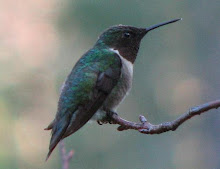Spring has sprung and in our neck of the woods thoughts go to budding plants and new life. All the animals are preparing to procreate. There are many things that you can do as a homeowner to offer suitable habitat for the wildlife that was displaced when your home or apartment was built. By making a few changes in your gardening and landscaping practice you can become more sustainable while you help the wildlife.
Steps Toward Sustainability
1. Say NO to Large Exotic Turf Lawns
Most of the grasses that make up the average lawn are not native and they require great amounts of water and fertilizer to stay green. Add to that the chemical weed killers that many people use to snuff out the native plants that pop up in these vast, unnatural, do nothing areas and the gasoline and man power needed to maintain them and you are just flushing money down the drain. In addition these chemicals, fertilizers and fumes from the lawn mower pollute the environment.
Replacing part of the lawn with islands of fruiting and flower native trees and shrubs will provide both human and animal with food and productive habitat. Starting an organic vegetable and/or herb garden will also provide a more sustainable landscape while providing inexpensive, fresh fruits and vegetables for your family.
2. Welcome Natural Predators into Your Landscape
The cycle of life has been going on for thousands of years and interrupting part of the predator - prey - producer food chain by killing off one of the necessary links is foolish and counter productive. We need to overcome our irrational fear of some beneficial creatures and begin to welcome them into the garden. Reptiles and Amphibians are valuable pest controllers and very few, if any of them eat our fruits and vegetables, yet many of us kill them or chase them from our property. In Louisiana there are only 6 types of poisonous snakes. All the rest are harmless, non-poisonous species that eat rodents, insects, snails, slugs and a variety of other small prey. Many birds are also fantastic pest controllers. In our garden, Carolina Wrens and Prothonotary Warblers keep it pest free during the spring and summer while they are raising young.
3. Make a Rain Garden
Rain Garden construction can be as simple as utilizing an existing low spot in your yard so that the water drains off after a couple of days. Plant with native or other drought tolerant plants that will attract your favorite animal and it's done. You can find detailed plans for making a rain garden at: How to Build a Rain Garden
4. Create a Compost Pile
Composting improves your soil and the environment. It's a win-win situation when you utilize plant material that would normally go into landfills, in your flower or vegetable garden. There are a couple of wonderful videos by "Smell Like Dirt" on YouTube that show you, step by step, How to build a compost pile.
Compost Pile Part 1
Compost Pile Part 2
You can also find an abundance of good information about sustainability at Naturally Native Squids Headquarters. Here are a few more links to get you started:
A Compost List by TheresaMarkham gives you over 200 compost pile ingredients.
Squidoo Guide to Gardening by The_Party_Animal is a collection of the best gardening lenses on Squidoo.
We hope you'll take the challenge and spring into sustainability this year. Good gardening!



